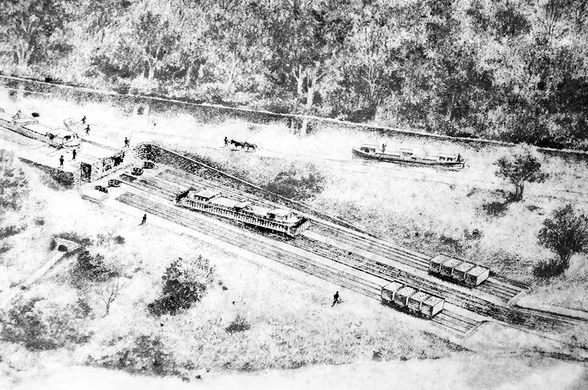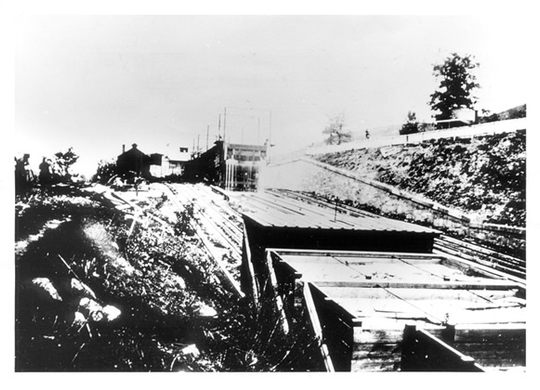C&O Boat Elevator Ruins
This forgotten boat elevator was an engineering marvel in its heyday.
The physical infrastructure of the U.S. is constantly rising and falling, with various eras of canals, railroads, and highways enjoying their moment in the sun until being eventually overtaken by future technology. In the nation’s capital there are few places where this swing of the pendulum is more evident than the old boat elevator on the C&O canal, a once world-famous bit of transportation engineering that is now obscure history even to locals.
Technically called the C&O Canal Incline Plane, the innovative elevator for boats was designed by the Potomac Lock and Dock Company in 1875. It was one of just two projects that were highlighted as the best representations of American engineering at the 1878 Exposition Universelle. (The other project, slightly less obscure, was the Brooklyn Bridge).
The boat elevator worked on the same principles as a funicular elevator, with massive counterweights that could raise and lower a water-filled caisson up and down sloped railroad tracks. In less than 20 minutes heavily loaded canal boats and sloshing water filled caissons could smoothly descend 600 feet on the diagonal and 40 feet in elevation—no small feat given the masses and forces involved.
The heavier downward journey was powered entirely by gravity, while the empty caisson was reset to its upper position with the help of pulleys and a water turbine. Interestingly, the high tension steel wires that made the whole thing go were provided by the same John A. Roebling that supplied suspension cables for the Brooklyn Bridge.
The Incline Plane was an expensive bid to increase efficiency on the C&O system. Canal Company President James C. Clark described the problem presented by “a string of loaded boats from half mile to a mile in length is seen lying above the Collector’s Office in Georgetown, waiting their turn to get into the wharves to discharge their cargoes.” The congestion made for unhappy boatsmen and uncollected canal fares. Located a few miles up from Georgetown, the Incline Plane gave captains an option to bypass the gridlock if they were headed for a destination farther down the Potomac.
The National Park Service notes that when it was built in 1875, the Canal Company was “riding a wave of prosperity, [as] more than 500 boats had plied the canal [that year]. “With the benefit of hindsight we can see that this moment of prosperity was just a blip. Even with the boat elevator, canals in the United States saw huge losses against the growing railroad companies in the late 19th century.
The Incline Plane sadly passed away at the age of 14 in a flood that also damaged miles of the C&O towpath and forced the Canal Company into bankruptcy. Today all that is left is a stone platform on the towpath and a plaque. You can visit; it’s two miles up the towpath from Georgetown.
Know Before You Go
The Incline Plane plaque is 1.4 miles up the canal towpath from Key Bridge, located at the southwestern corner of the Georgetown Distributing Reservoir. There are stone ruins scattered throughout the overgrowth stretching down to the shoreline.
Community Contributors
Added by
Edited by
Plan Your Trip
The Atlas Obscura Podcast is Back!




























Follow us on Twitter to get the latest on the world's hidden wonders.
Like us on Facebook to get the latest on the world's hidden wonders.
Follow us on Twitter Like us on Facebook